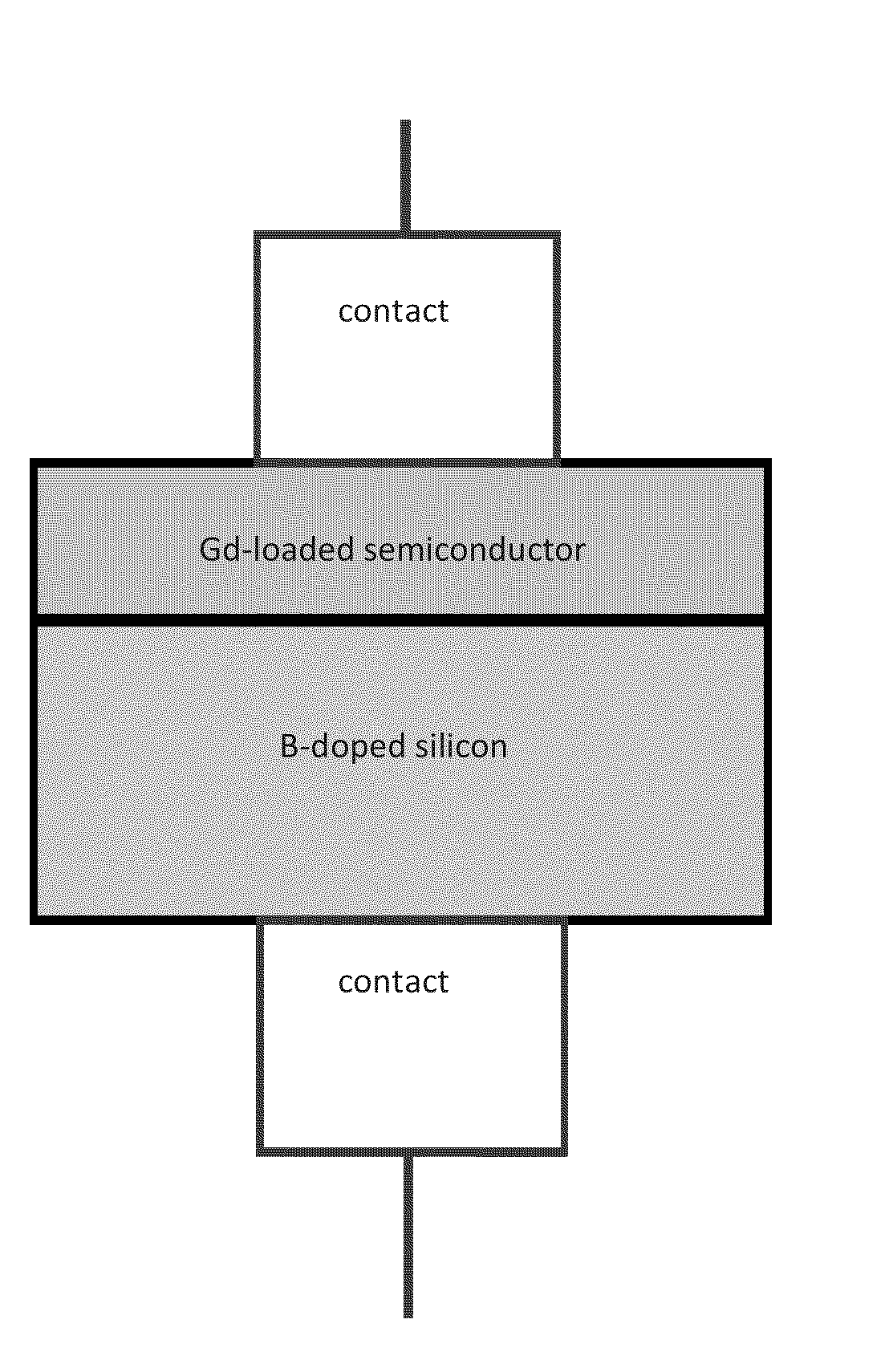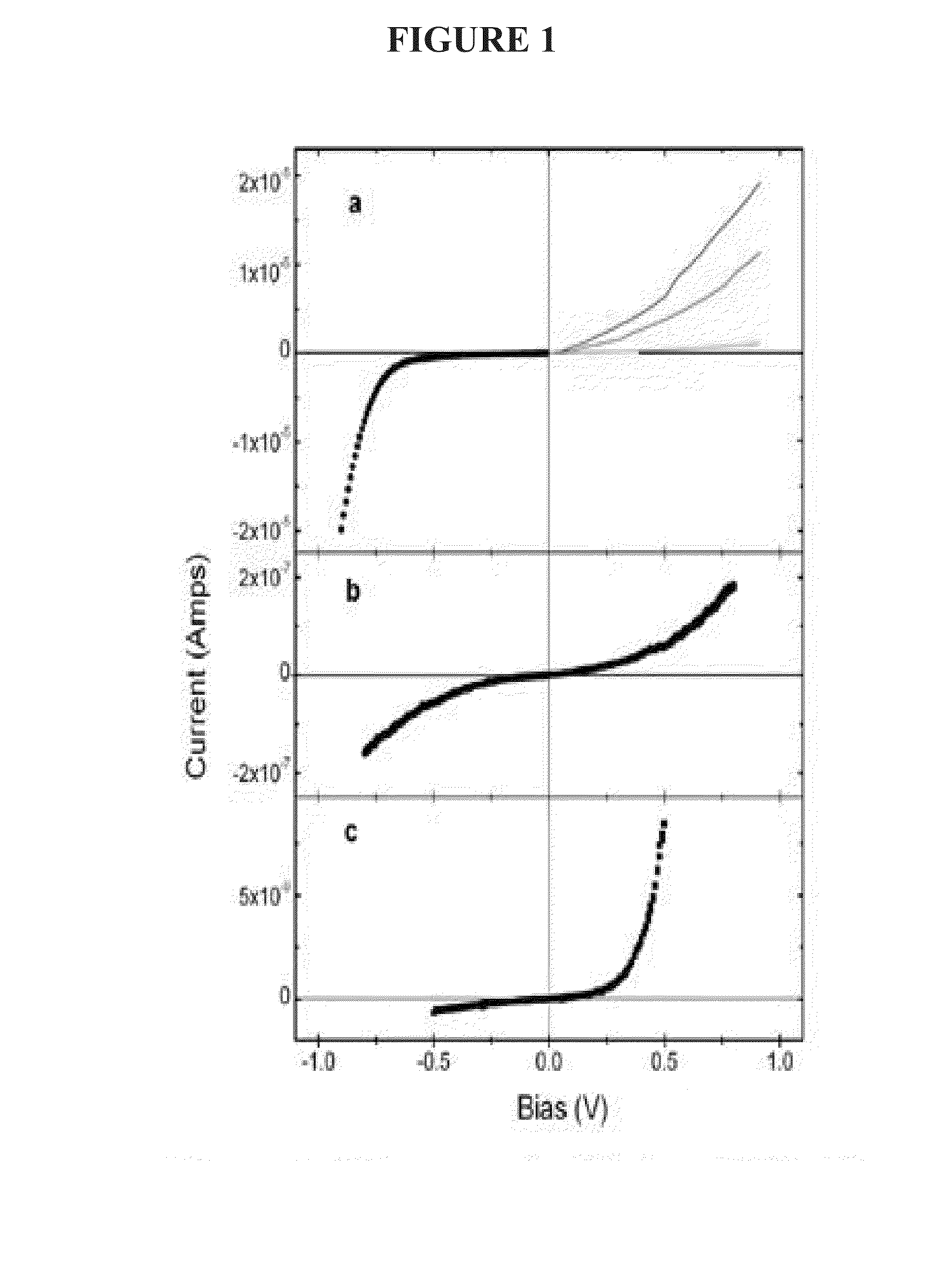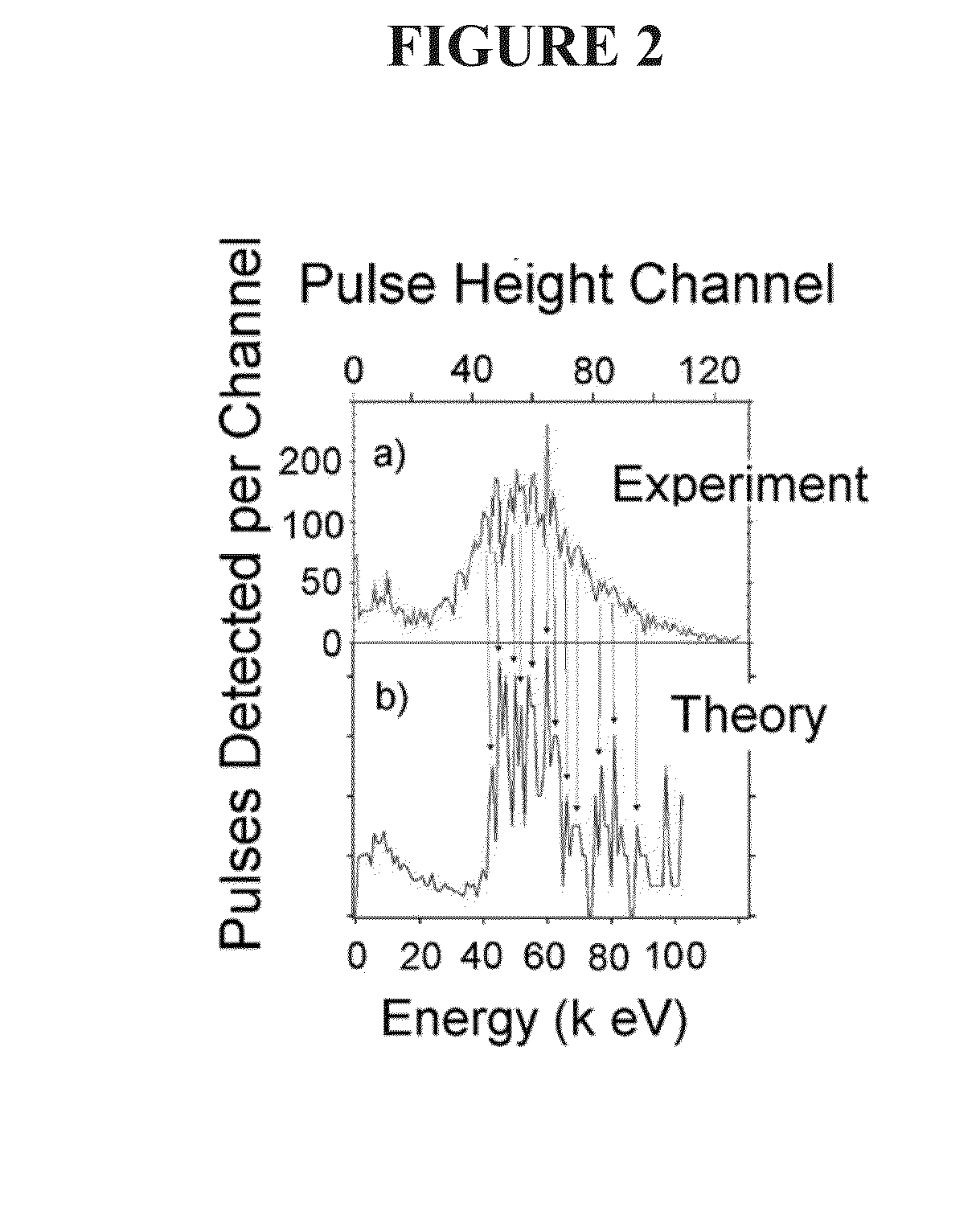Neutron detection using gd-loaded oxide and nitride heterojunction diodes
a heterojunction diode and neutron detection technology, which is applied in the direction of basic electric elements, electrical equipment, semiconductor devices, etc., can solve the problems of large power requirements, insufficient sensitiveness, and bulkyness, and achieve high neutron capture cross-section, superior sensitivity, and high neutron energy
- Summary
- Abstract
- Description
- Claims
- Application Information
AI Technical Summary
Benefits of technology
Problems solved by technology
Method used
Image
Examples
Embodiment Construction
[0026]Gadolinium-doped films of GaN, and related thin films are prepared as reported in Eur. Physical J. Applied Physics 55, 3. 31303 (2011) and Eur. Physical J. Applied Physics 56, 1, 11301 (2011) incorporated herein-by-reference-for their disclosure of methods of preparing thin films of Gd-doped rare earth materials. The films of this invention can be prepared as is done for the Gd-doped GaN films. The Gd doped thin films (50-300 nm, but ideally 4-60 microns) are fabricated on an active substrate such as Si(111) or an insulating substrate such as SiO2 or sapphire Al2O3 substrates by RF plasma (EPI 620) assisted molecular beam epitaxy (MBE). The growth parameters for the deposition of Gd-doped (in situ) GaN thin films are a base pressure of 10-11 Torr, nitrogen flux of 0.75-1.0, RF power of 500 W, substrate temperature of 850-900° C., Ga cell temperature of 850° C., and Gd cell temperatures of 1050-1100° C.
[0027]The thickness of the films is measured with a surface profilometer and...
PUM
 Login to View More
Login to View More Abstract
Description
Claims
Application Information
 Login to View More
Login to View More - R&D
- Intellectual Property
- Life Sciences
- Materials
- Tech Scout
- Unparalleled Data Quality
- Higher Quality Content
- 60% Fewer Hallucinations
Browse by: Latest US Patents, China's latest patents, Technical Efficacy Thesaurus, Application Domain, Technology Topic, Popular Technical Reports.
© 2025 PatSnap. All rights reserved.Legal|Privacy policy|Modern Slavery Act Transparency Statement|Sitemap|About US| Contact US: help@patsnap.com



